The kitchen, more than any other space in your home, is a dynamic ecosystem. It’s where culinary creativity flourishes, conversations spark over coffee, and the rhythm of daily life finds its anchor. A thoughtfully executed kitchen design transcends mere aesthetics; it’s about crafting an intuitive, inviting, and highly efficient environment tailored to your unique lifestyle. Whether you’re embarking on a full-scale kitchen renovation, envisioning a brand-new build, or simply seeking to refresh your current culinary zone, understanding the core tenets of intelligent kitchen planning is indispensable.
This guide will unhide 12 fundamental approaches about how to design a kitchen that not only looks stunning but functions flawlessly. From strategic layouts to the nuanced selection of materials, we’ll explore the best ways to transform your cooking space into the heart of your home – a place of joy, efficiency, and enduring beauty. Let’s unlock the secrets to your dream kitchen.
1. Master the Ergonomics: Perfecting Your Kitchen Layout
The foundational element of any successful kitchen design is its layout. This isn’t just about where things go; it’s about creating an ergonomic flow that minimizes effort and maximizes efficiency during your culinary endeavors. The classic “work triangle” (refrigerator, sink, cooktop) remains a timeless principle, but modern kitchen layouts often extend this to “work zones” that accommodate multiple users or specific tasks.
Consider these popular layouts and their strengths:
- Galley Kitchen: Two parallel walls, highly efficient for singular focus, often seen in a small kitchen design.
- L-Shaped Kitchen: Utilizes two adjacent walls, offering ample counter and storage, great for integrating with open-plan living.
- U-Shaped Kitchen: Three adjacent walls, providing maximum counter space and storage, often incorporating a peninsula for added utility.
- Island Kitchen: A versatile centerpiece, adding workspace, storage, and a social hub, often complementing L- or U-shaped designs.
- Single-Wall Kitchen: Best for very compact spaces, keeping all primary functions on one wall.

Choosing the ideal kitchen layout ensures seamless movement and transforms cooking from a chore into a fluid, enjoyable activity.
2. Craft Intelligent Kitchen Storage Solutions
Clutter is the enemy of a peaceful kitchen. Effective kitchen storage is not just about having enough cabinets; it’s about intelligent design that makes every item accessible while keeping your space organized and visually uncluttered. Think beyond basic shelves to truly optimize your modern kitchen.
Explore innovative storage features:
- Deep Drawer Dividers: Custom inserts for pots, pans, and lids, eliminating noisy clatter and maximizing depth.
- Pull-Out Pantries and Spice Racks: Slim units that bring contents forward, perfect for narrow spaces and keeping staples visible.
- Corner Cabinet Carousels (Le Mans/Lazy Susans): Transform awkward corners into accessible storage goldmines.
- Vertical Storage: Dedicated slots for baking sheets, cutting boards, and platters, preventing them from toppling.
- Toe-Kick Drawers: Utilize the often-wasted space beneath base cabinets for slender, discrete storage.
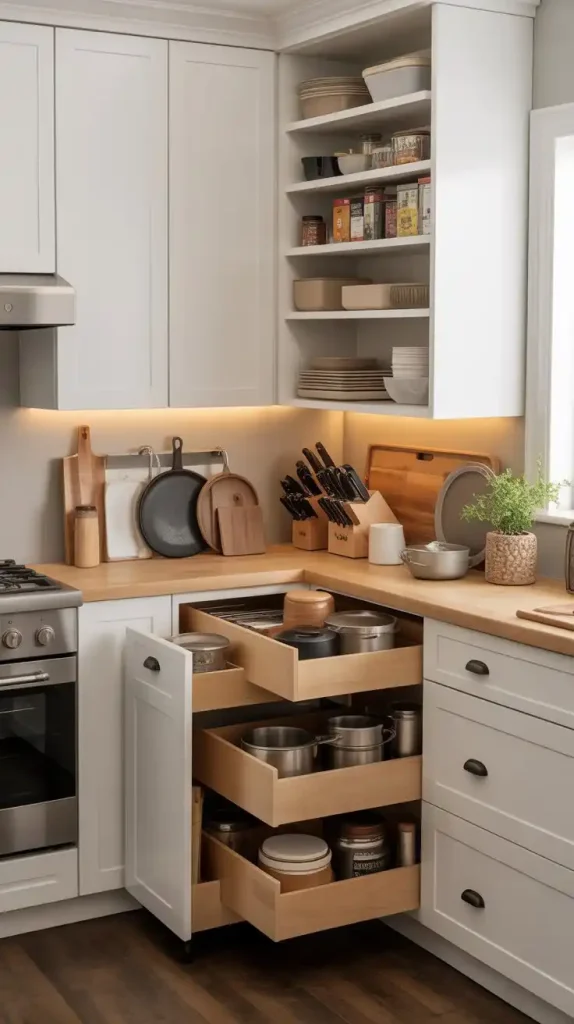
Prioritizing ingenious storage solutions is paramount in any effective kitchen planning strategy, enhancing both function and overall kitchen aesthetics.
3. Select Cabinetry as Your Kitchen’s Foundation
Kitchen cabinets define the aesthetic tone of your entire space, while also serving as its primary storage. Their quality and style are pivotal to the longevity and visual appeal of your kitchen design. This is a significant investment in your kitchen remodel, so choose wisely.
When choosing your kitchen cabinets:
- Material Durability: Opt for sturdy constructions like solid wood, furniture-grade plywood, or high-density fiberboard (HDF) with robust finishes.
- Door Styles: From classic Shaker to sleek flat-panel or ornate raised-panel, select a style that aligns with your overall kitchen style.
- Hardware and Finishes: The knobs, pulls, and cabinet finish significantly impact the final look and feel, contributing to your kitchen ideas.
- Soft-Close Technology: A small detail that greatly enhances daily use and protects cabinet integrity.
- Custom vs. Stock: Evaluate if custom builds are necessary to maximize unique spaces, or if stock options can suffice for a budget kitchen design.
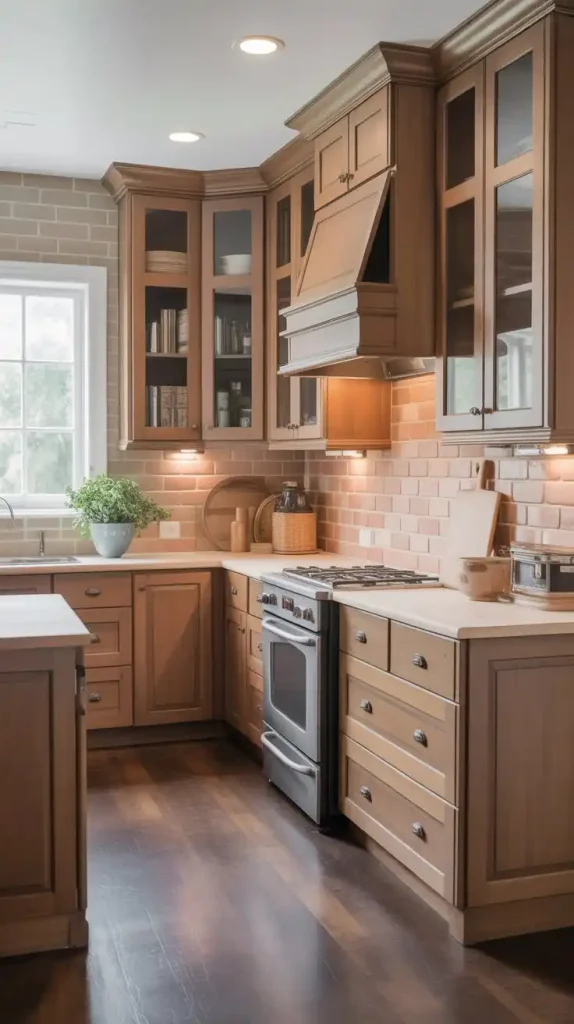
Well-selected and expertly installed kitchen cabinets form the bedrock of your functional kitchen, combining durability with undeniable visual appeal.
4. Choose Countertops for Beauty and Resilience
Your kitchen countertops are the workhorses of the culinary space, enduring spills, heat, and constant activity. Beyond their functional role, they are a dominant visual element, contributing significantly to your kitchen’s overall style and mood. The right choice combines resilience with inherent beauty.
Consider these popular countertop materials:
- Quartz: Engineered for ultimate durability, non-porous, highly stain and scratch-resistant, and available in a vast array of colors and patterns, mimicking natural stone.
- Granite: A natural stone offering unique patterns, excellent heat resistance, and a luxurious feel, though it requires periodic sealing.
- Marble: Exudes timeless elegance and beauty, often chosen for its distinctive veining, but is softer and more prone to etching and staining; ideal for less intensive use areas or dedicated baking stations.
- Solid Surface (e.g., Corian): Offers seamless integration with sinks, is non-porous and repairable, providing a smooth, contemporary finish.
- Butcher Block: Adds warmth and a tactile, organic feel, excellent for food prep, though it requires regular oiling and maintenance.
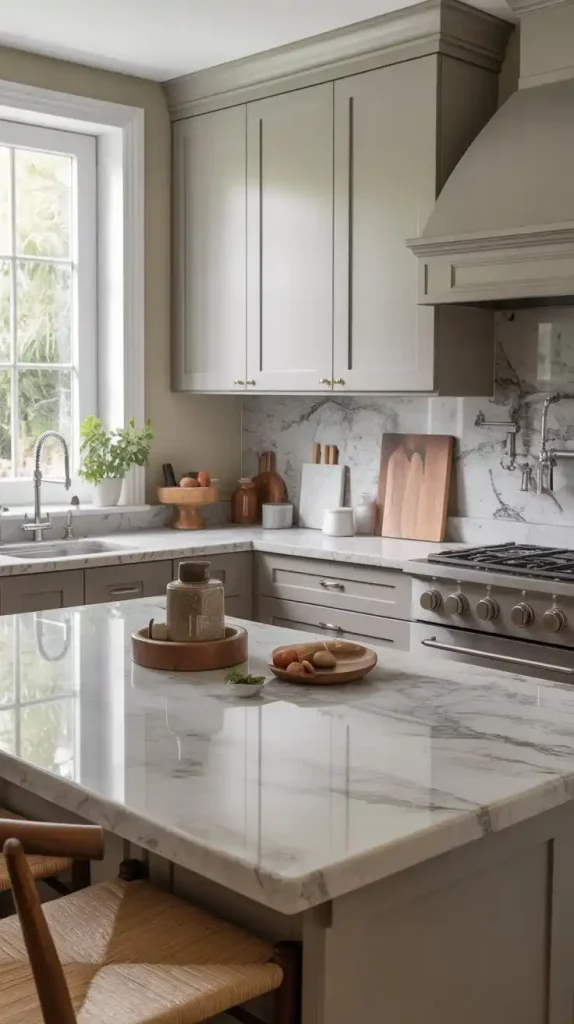
Your countertop selection is crucial for both the long-term practicality and the enduring kitchen aesthetics of your space.
5. Strategically Layer Your Kitchen Lighting
Often overlooked, good kitchen lighting is paramount for both safety and ambiance. A well-lit kitchen should incorporate multiple layers of light to ensure every task is well-illuminated and the space feels warm and inviting. Strategic lighting can transform the mood and functionality of your kitchen.
Implement a multi-layered lighting plan:
- Ambient Lighting: Provides overall illumination for the entire room, often achieved with recessed lights or flush-mount fixtures, setting the general tone.
- Task Lighting: Directly illuminates specific work zones, crucial for safe food preparation (e.g., under-cabinet lights, pendant lights over an island).
- Accent Lighting: Highlights architectural features or decorative elements, creating visual interest (e.g., in-cabinet lighting, toe-kick lighting).
- Dimmers: Crucial for adjusting light intensity, allowing you to transition from bright task lighting to a softer, more intimate ambiance for dining or entertaining.
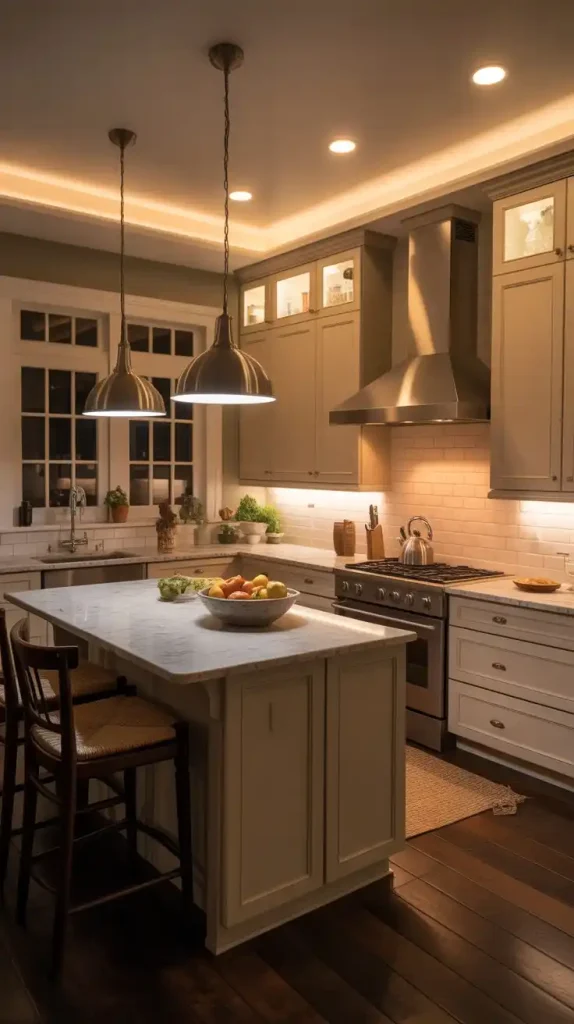
Thoughtful kitchen lighting transforms your space into a highly functional area by day and a warm, welcoming hub by night, perfecting your kitchen design.
6. Integrate an Island or Peninsula as a Hub
A kitchen island or peninsula serves as more than just an additional surface; it’s a dynamic hub that enhances workflow, increases storage, and often becomes the social epicenter of your kitchen. Thoughtfully integrating one can redefine the functionality and interaction within your kitchen layout.
Consider the multifaceted benefits:
- Expanded Counter Space: Provides invaluable extra room for meal preparation, baking, or plating.
- Additional Storage: Can house extra cabinets, drawers, specialized bins (like recycling pull-outs), or even integrated shelving for cookbooks.
- Informal Dining: Create a casual breakfast bar or quick-meal spot with stools, perfect for busy mornings or casual entertaining.
- Appliance Integration: Offers a prime location for a secondary prep sink, a dedicated wine fridge, a microwave drawer, or even a secondary cooktop.
- Defined Zones: In an open-concept living space, an island can subtly delineate the kitchen area from dining or living rooms.
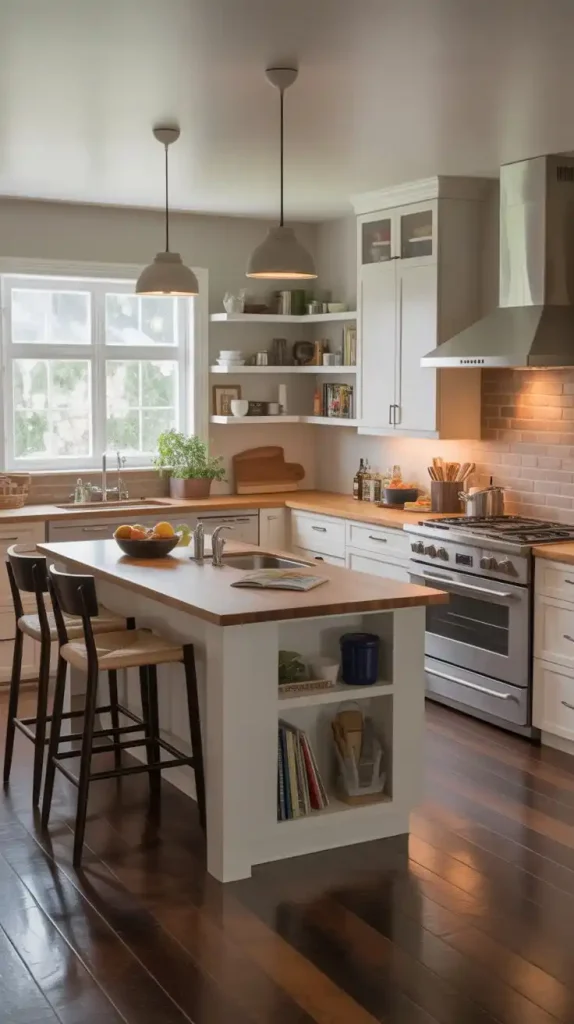
Careful planning of its size, shape, and features ensures the island or peninsula becomes a seamless and indispensable extension of your kitchen planning.
7. Cultivate a Cohesive Color and Material Palette
The color palette you choose for your kitchen significantly impacts its mood, perceived size, and overall design style. A cohesive palette ensures that all elements – from kitchen cabinets and kitchen countertops to walls and flooring – work harmoniously to create a balanced and inviting space. This is where your unique kitchen style truly shines.
To achieve harmony:
- Establish a Base: Often a neutral (whites, grays, beiges) for larger surfaces like cabinets or walls, providing a timeless canvas.
- Introduce Accents: Integrate richer hues or textures through your kitchen backsplash, bar stools, small appliances, or decorative elements.
- Consider Natural Materials: Incorporate warm wood tones, cool stone textures, or metallic accents to add depth and authenticity.
- Reflect Natural Light: Lighter colors can make a small kitchen design feel larger and brighter, maximizing available light.
- Test Samples: Always bring samples of your chosen paints, cabinet finishes, and countertops into your kitchen to see how they look under various lighting conditions.
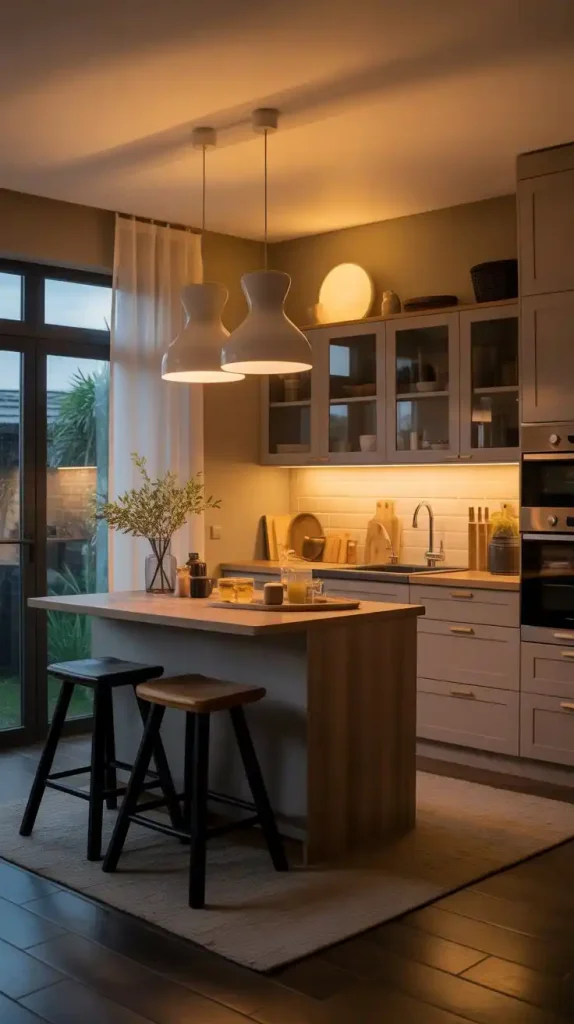
A thoughtfully cultivated palette ensures your kitchen design feels intentional, sophisticated, and distinctly “you.”
8. Choose a Functional and Stylish Backsplash
A kitchen backsplash is a crucial element that marries practicality with pervasive style. Its primary role is to protect your walls from cooking splashes and moisture, particularly behind the sink and cooktop. Yet, it also offers an exceptional opportunity to infuse personality, texture, and a pop of color into your kitchen remodel.
Explore diverse backsplash options:
- Classic Subway Tile: A timeless and versatile choice, available in various colors and finishes for a clean, enduring look.
- Patterned Ceramic/Porcelain: Offers endless possibilities for intricate designs, geometric patterns, or vibrant motifs to create a focal point.
- Natural Stone (Marble, Travertine): Adds luxurious texture and unique veining, though it may require more maintenance due to porosity.
- Glass Tile: Reflects light beautifully, adding a contemporary shimmer and depth to the wall.
- Metal (Stainless Steel, Copper): For an industrial or bold look.
- Full-Height Slabs: Extending your countertop material up the wall for a seamless, high-end, and dramatic statement.
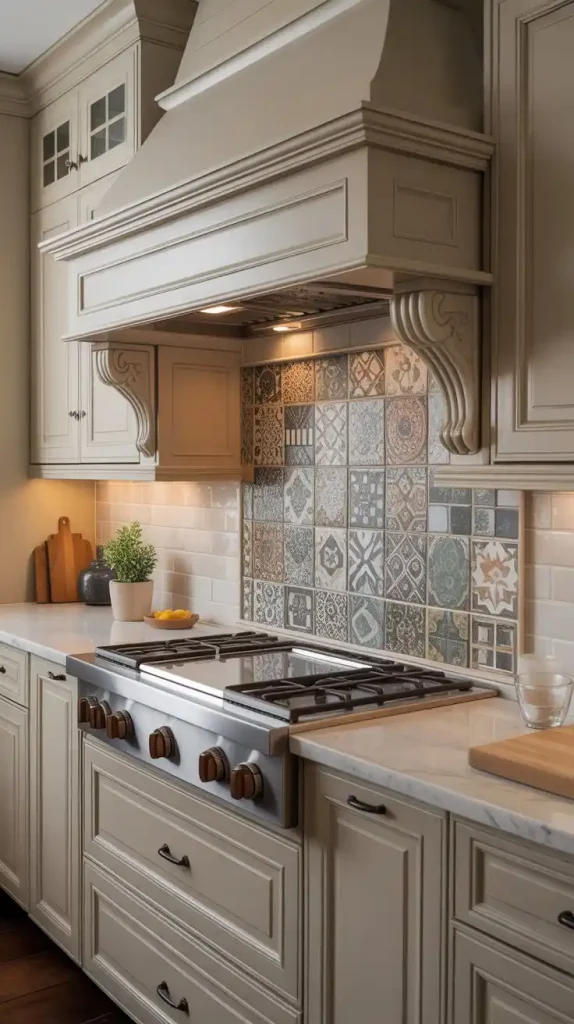
The right kitchen backsplash acts as a visual bridge between your countertops and cabinets, culminating in a polished and well-appointed kitchen design.
9. Integrate Smart, Efficient Appliances
Modern kitchen appliances are no longer just about cooking; they’re about enhancing convenience, boosting energy efficiency, and elevating the overall cooking experience. Investing in smart, high-performing appliances can truly modernize your kitchen remodel and streamline your daily routine.
Consider these smart integrations:
- Smart Refrigerators: Featuring touchscreens, internal cameras to view contents remotely, and inventory management for grocery lists.
- Induction Cooktops: Offer rapid heating, precise temperature control, and superior energy efficiency, with a sleek, easy-to-clean surface.
- Convection Ovens: Circulate hot air for faster, more even cooking and baking.
- Dishwasher Drawers: Convenient for smaller loads and provide ergonomic access.
- Built-in Coffee Systems: For a seamless and luxurious morning routine.
- Touchless Faucets: Offer hands-free convenience, enhancing hygiene.
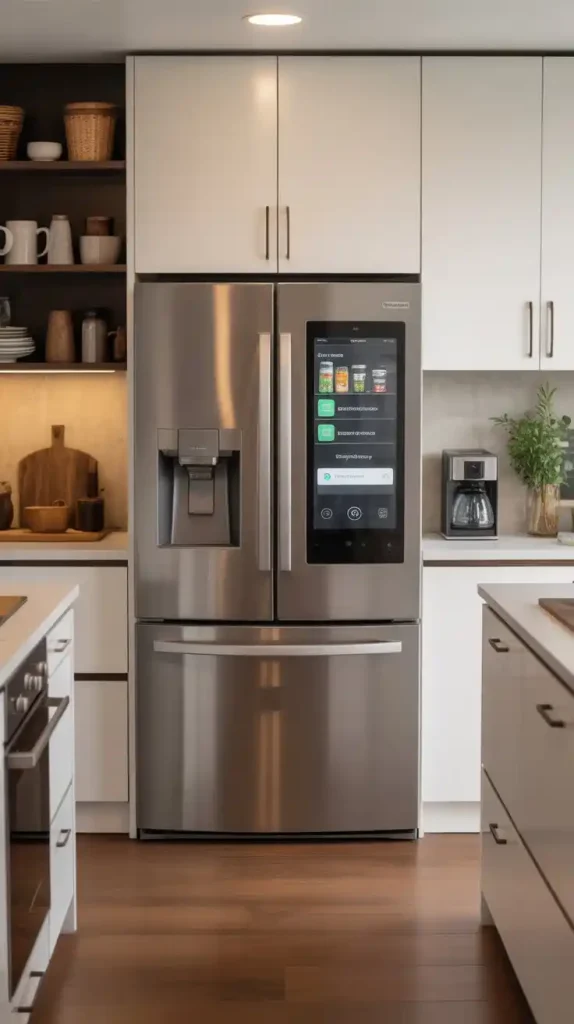
Choosing appliances that align with your cooking habits and technological preferences is essential for a truly efficient kitchen.
10. Elevate with Thoughtful Kitchen Decor & Accessories
While the major components form the structure, it’s the carefully chosen kitchen decor and accessories that breathe life and personality into your space. These details transform a functional area into a warm, inviting, and uniquely styled environment, reflecting your personal kitchen aesthetics.
Ideas for thoughtful accessorizing:
- Curated Open Shelving: Display beautiful dishware, vintage finds, cookbooks, or decorative ceramics.
- Lush Greenery: Potted herbs on the windowsill, a large fiddle-leaf fig in a corner, or fresh flowers for natural vibrancy.
- Art and Wall Hangings: A piece of art, a stylish clock, or even a framed menu can add visual interest.
- Designer Lighting Fixtures: A statement pendant over an island or an elegant sconce can act as kitchen “jewelry.”
- Functional Decor: Beautiful cutting boards, unique serving bowls, or artisanal olive oil dispensers that double as display pieces.
- Textile Accents: High-quality dish towels, stylish oven mitts, or a patterned rug can add softness and color.
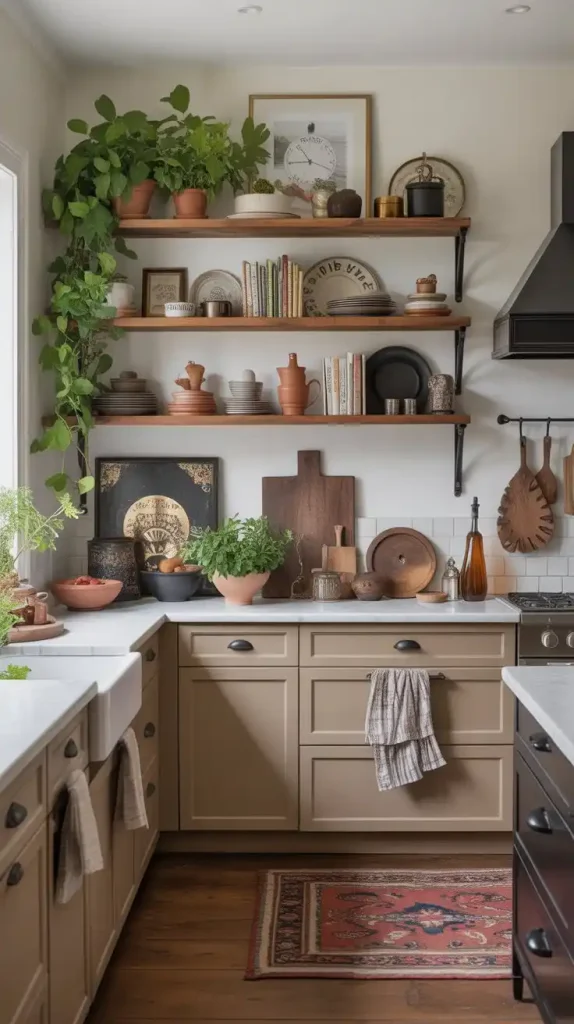
These layers of kitchen decor and thoughtful accessories contribute significantly to creating a rich, welcoming, and memorable kitchen design.
11. Ensure Robust Ventilation
Proper kitchen ventilation is more than a design detail; it’s a critical component for maintaining air quality, preventing grease and odor buildup, and ensuring comfort while cooking. An effective range hood or exhaust system is fundamental to a healthy and clean kitchen environment, extending the life of your surfaces and appliances.
Key ventilation considerations:
- Ducted Systems: Vent cooking byproducts directly outside, offering the most effective removal.
- Ductless (Recirculating) Systems: Filter air through charcoal filters before recirculating it, suitable when external venting is not feasible, though less effective.
- CFM Rating: Choose a hood with an adequate Cubic Feet per Minute (CFM) rating to match your cooktop’s heat output and kitchen size.
- Noise Level: Consider quieter models (measured in Sones) for a more peaceful cooking experience.
- Design Integration: Select a hood style (under-cabinet, wall-mounted, island, downdraft) that complements your overall kitchen style.
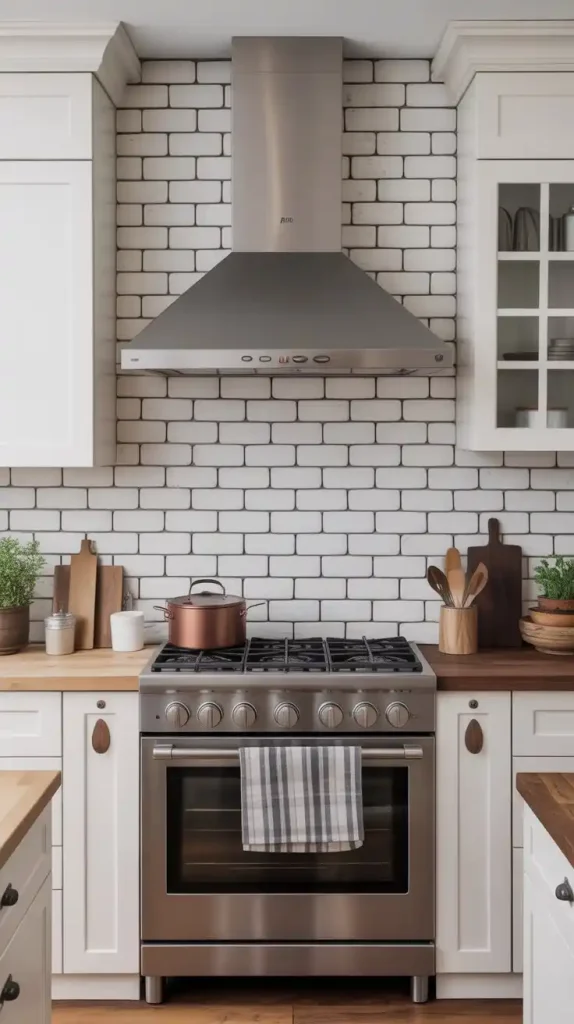
Investing in a robust and appropriately sized ventilation system is an indispensable aspect of kitchen planning that directly impacts the comfort and longevity of your kitchen.
12. Design with Future-Proofing and Durability in Mind
A well-designed kitchen is built to last, adapting to changing needs and standing the test of time both in style and durability. When planning your kitchen renovation or kitchen remodel, consider long-term resilience, timeless aesthetics, and potential future needs. This approach ensures your investment retains its value and functionality for years to come.
Elements for future-proofing:
- Timeless Finishes: Opt for classic materials and neutral color palettes that won’t quickly go out of style, allowing for easy updates with accessories.
- Durable Materials: Choose high-quality kitchen countertops, kitchen cabinets, and flooring that can withstand daily wear and tear.
- Adaptable Layouts: Design for flexibility, ensuring the space could potentially accommodate mobility changes or evolving family needs.
- Energy Efficiency: Select appliances with good energy ratings to reduce utility costs and environmental impact.
- Maintenance: Consider how easy materials are to clean and maintain on a daily basis.
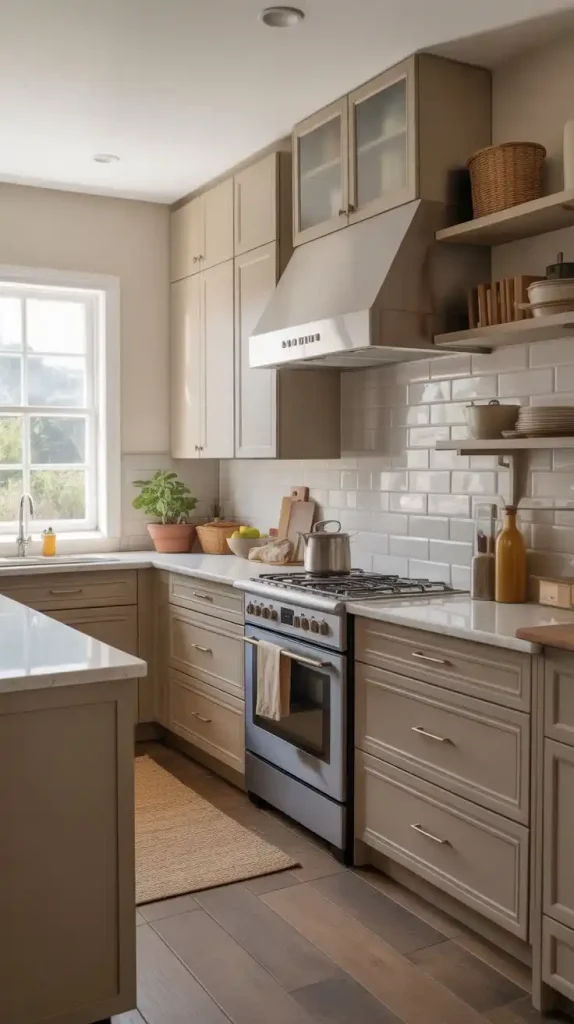
Designing with durability and long-term vision in mind ensures your dream kitchen remains a joy to use and a valuable asset to your home for decades.
Where should I start when planning a kitchen redesign?
When you start to plan a kitchen redesign, first set a budget. A budget will guide all of your decisions, from your choice of cabinets to your choice of appliances. Next, think about your workflow and how you use the kitchen. Consider the layout and how a new design can improve the way you move and cook. Finally, define your style. Use a mood board with photos you love to guide your choices and help you find a look you want.
How do I choose the right kitchen layout?
The right kitchen layout depends on the size of your space and your personal needs. For a small kitchen, a galley or an L-shaped layout is a great idea, as it makes the most of a limited space. For a large kitchen, a U-shaped or an open-concept layout with an island gives you a lot of counter space and room for movement. The most important thing is to ensure a good workflow, with an easy path between the sink, stove, and refrigerator.
What are some ways to save money on a kitchen renovation?
You can save a lot of money on a kitchen renovation with a few smart choices. A great way to save is to keep the existing layout. This helps you avoid the high cost of moving plumbing and electrical lines. You can also save on materials. Choose more affordable cabinet options, and use open shelving for a modern look. Finally, you can save money with a DIY project, like painting your old cabinets or installing a new backsplash yourself.
Conclusion
Designing a kitchen is a complex yet rewarding endeavor that directly impacts your daily life and your home’s value. By thoughtfully applying these 12 best ways to design a kitchen, you can craft a space that is not only highly efficient and supremely functional but also a true reflection of your unique taste and lifestyle. From optimizing your kitchen layout and selecting resilient materials to integrating smart technology and adding personal touches, every decision contributes to a kitchen that you’ll cherish. Embrace the possibilities of kitchen planning and transform your culinary space into the vibrant heart of your home.




